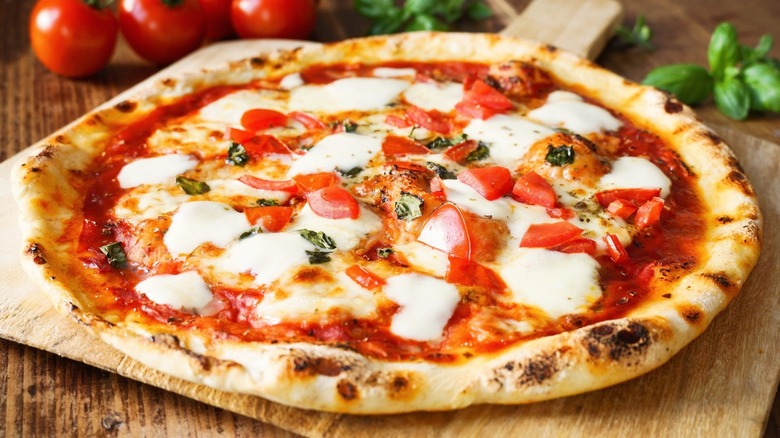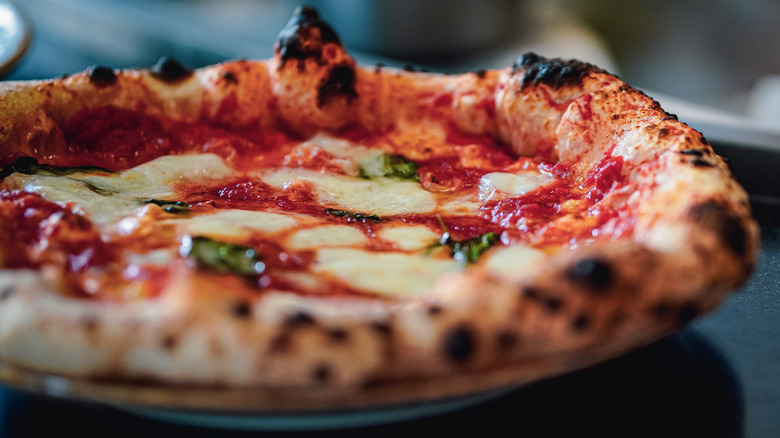The Actual Term For Pizza Crust Is Cornicione
Pizza seems pretty straight forward. It is a dish of Italian origin made with a rounded and flattened bread dough topped with sauce, cheese, and other toppings (via Britannica). Authentic pizza is different from the American version, but the origin is the same — simple flatbreads topped with oil and herbs primarily eaten on the street or by travelers, notes History Today. The pizza more similar to what is known today rose to prominence in Naples toward the end of the 18th century. The pizza margherita, created by pizza cook Raffaele Esposito for Queen Margherita, had what would come to be known as a classic combination. Tomatoes, cheese, and basil were all served on top of a Neapolitan-style crust.
The Associazione Verace Pizza Napoletana, the international governing body for Neapolitan pizzas, lists many detailed standards for this type of pizza, including exact ingredient measurements, cooking temperature, and even the way in which olive oil should be drizzled on the dough. In general, however, the pizza must be round, soft, and fragrant. The crust must be thin, but with a raised edge. And that raised edge is actually something special, and "crust" is not exactly the most accurate term to describe it.
Cornicione is the actual term for pizza crust
In the United States, "crust" is used as a catch-all term for the entire base of the pizza. However, there is a word to describe just the sought-after raised edge: cornicione. Pronounced "cornee-CHO-nay," this Italian word refers to the rim of the crust, according to The Sauce. Cornicione is actually the Italian word for the decorative border around the top of a building or wall, also called crown molding. Fittingly, cornicione is like the beautiful crown of a pizza.
The Pizza Informer describes the perfect cornicione as being raised and crisp, but soft and fluffy on the inside. While there is some debate around what all people think is the best style of pizza (New York, Detroit, New Jersey, St. Louis, Chicago, and so on), Neapolitan is what you want to go for if you're looking for that quintessential cornicione (per The Pizza Heaven). The shape of the pizza, gluten development, long fermentation, and high cooking temperature all lead to a cornicione with a crispy perfect puff and a pillowy inside.

